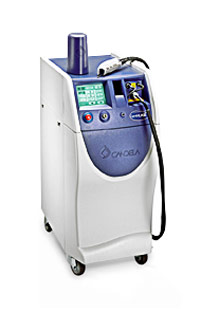Buyer Beware: The Facts About Laser Hair Removal

Photo: Courtesy of GentleLase
If you're considering laser hair removal, consider this: It's not always a sure thing. "Hair removal lasers aren't like point-and-shoot cameras," says Roy Geronemus, MD, clinical professor of dermatology at New York University Medical Center. The results can be great, but if you're treated with the wrong laser or if it's on the wrong setting, you won't get the maximum hair reduction (there's no such thing as total removal). And you might end up with burns, hyperpigmentation, even increased hair growth (this phenomenon may be seen in darker-skinned women who are being treated on the face, but the risk can be reduced by using a longer-wavelength laser). Many state medical boards allow nonphysicians to use lasers, and there's little oversight of the many aestheticians performing treatments. For the most reliable results, see a dermatologist (who will charge you an average of $500 for one treatment). But wherever you go—a derm, a medispa, a gynecologist—be sure to ask these questions before "Where do I sign?"
1. How many lasers are on the premises, and are they rented or owned? The more lasers a doctor or medispa has access to, the greater the likelihood you'll be treated with the safest, most effective one for your skin color and hair type. Be wary if machines are rented: Chances are the outfit is doing only a few procedures a month.
2. What lasers do you use for hair removal, which one is best for my skin, and why? The doctor or technician should be able to articulate why a particular laser is the best match for you (taking into account your skin tone, hair texture, and color) and any potential complications. Geronemus, whose practice owns more than 50 lasers, uses the alexandrite laser for hair removal most often; the diode and nd:Yag lasers are particularly effective as well. Intense pulsed light machines can also remove hair, but only on light skin, and the quality of those machines can vary.
3. How many laser hair removal treatments have you performed? There's no standard "laser hair removal certification," so this is the best way to gauge a person's experience level. The answer should be at least a few hundred.
4. How many sessions will I need? The average number of visits necessary to see permanent hair reduction is four to six—but some people respond well in two sessions, and others need a dozen. That is why a "package deal" offered for laser hair removal is often more advantageous for the doctor or technician than for the patient.
5. Can you treat me if I have a tan? If the answer is yes, head the other way. "The only way to treat tanned skin without causing burns is to use such low settings that treatment wouldn't be effective," says Ranella Hirsch, MD, assistant clinical professor of dermatology at Boston University School of Medicine.
1. How many lasers are on the premises, and are they rented or owned? The more lasers a doctor or medispa has access to, the greater the likelihood you'll be treated with the safest, most effective one for your skin color and hair type. Be wary if machines are rented: Chances are the outfit is doing only a few procedures a month.
2. What lasers do you use for hair removal, which one is best for my skin, and why? The doctor or technician should be able to articulate why a particular laser is the best match for you (taking into account your skin tone, hair texture, and color) and any potential complications. Geronemus, whose practice owns more than 50 lasers, uses the alexandrite laser for hair removal most often; the diode and nd:Yag lasers are particularly effective as well. Intense pulsed light machines can also remove hair, but only on light skin, and the quality of those machines can vary.
3. How many laser hair removal treatments have you performed? There's no standard "laser hair removal certification," so this is the best way to gauge a person's experience level. The answer should be at least a few hundred.
4. How many sessions will I need? The average number of visits necessary to see permanent hair reduction is four to six—but some people respond well in two sessions, and others need a dozen. That is why a "package deal" offered for laser hair removal is often more advantageous for the doctor or technician than for the patient.
5. Can you treat me if I have a tan? If the answer is yes, head the other way. "The only way to treat tanned skin without causing burns is to use such low settings that treatment wouldn't be effective," says Ranella Hirsch, MD, assistant clinical professor of dermatology at Boston University School of Medicine.



